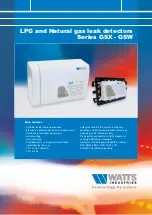
18
OPERATION AND USE TIPS
Factors such as line of sight, wind, and sunlight conditions are not something
that most operators have had to take into account in the past. This section
gives a few tips and tricks for getting the most out of the
GAS•TRAC
LZ-30
.
NOTE
:
Federal, state, municipal, and/or company procedures supersede
what is outlined in this section.
I
NVESTIGATING
T
HROUGH
W
INDOWS
The laser technology used in the
GAS•TRAC
LZ-30
allows the instrument to
detect through standard window glass. This is a big advantage as it allows
the user to investigate the inside of a building (for example) when he/she
otherwise might not have been able to gain access.
In order to get the best results in this type of a scenario, follow these steps:
1. Maintain an angle of attack that is less than 90
˚
to your target, and ideally between 45
˚ and 75˚.
This is depicted in the image to the right.
This greatly reduces the chance of what is
known as “specular reflections”, which is when
a portion of the laser reflects off of the surface
of the window. It is also especially helpful for
double-pane windows where the laser might
reflect/bounce multiple times between the
panes.
2. Use the distance measurement on-screen to
help determine if the lasers are actually
passing through the window. For example, if
the distance measurement on a wall next to
the window reads 15m and on the window
reads 20m, you can be reasonably sure you
are detecting through the window.
If instead they are the same distance, the
laser is just reflecting off of the window. An
anti-reflective coating on the glass may
cause this.
90
˚
45
˚
- 75
˚
Summary of Contents for GAS-TRAC LZ-30
Page 33: ...33 NOTES ...
Page 34: ...34 NOTES ...
















































